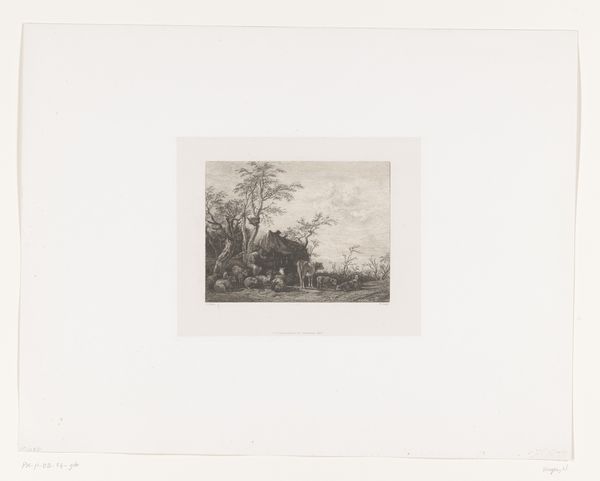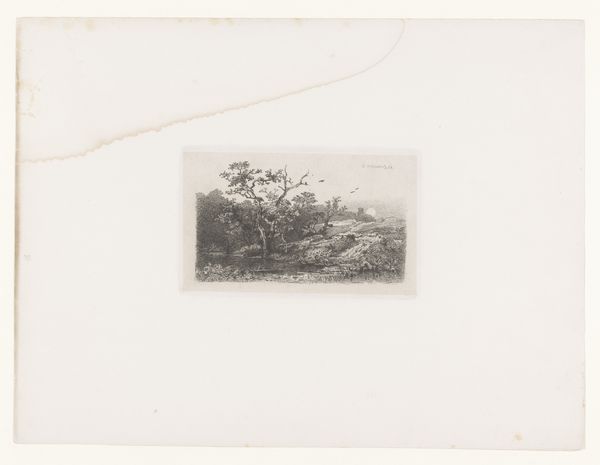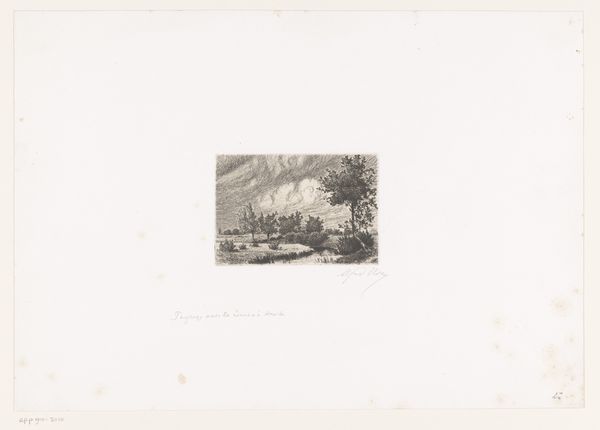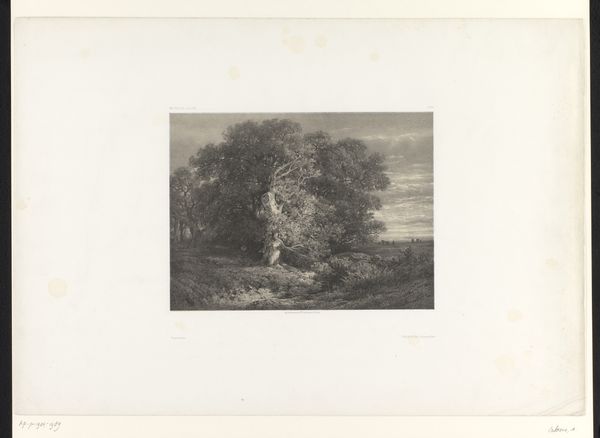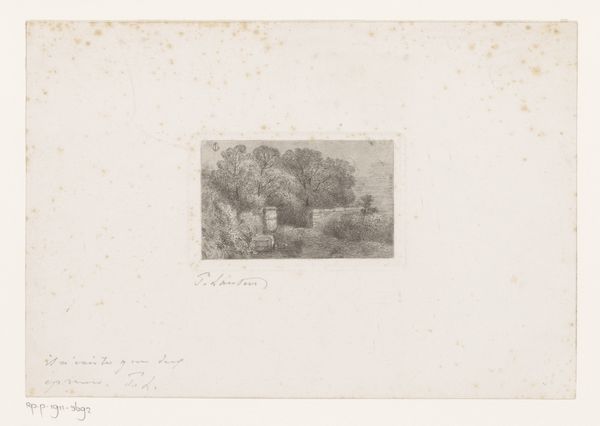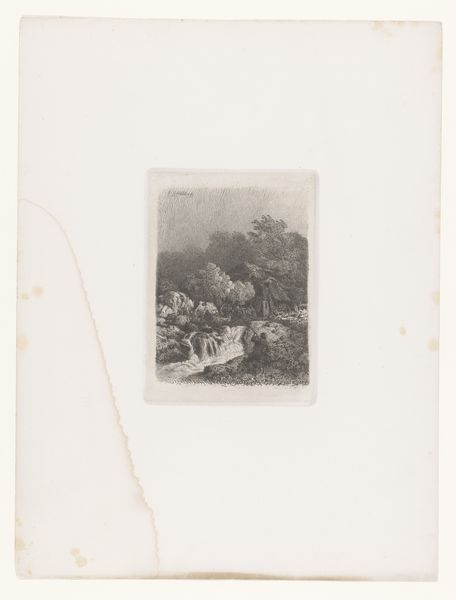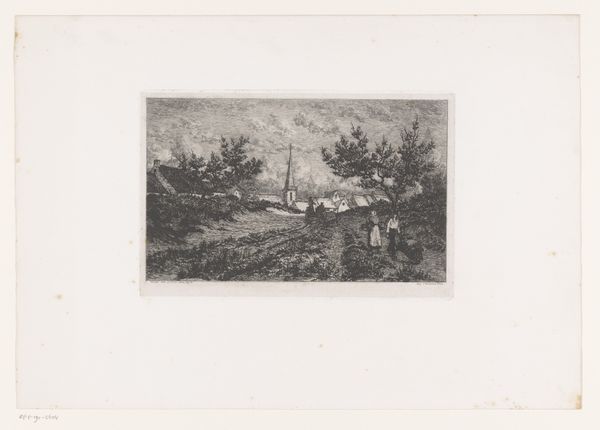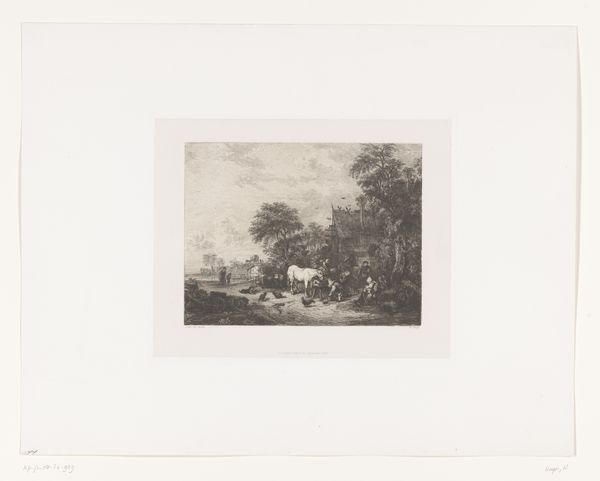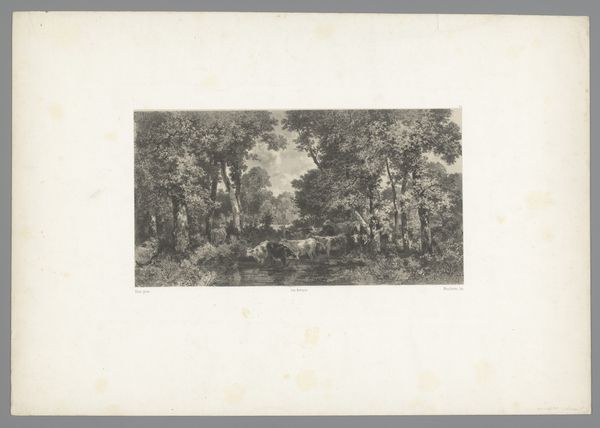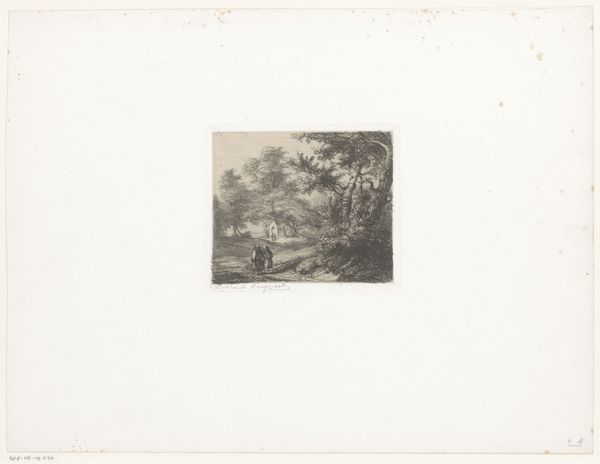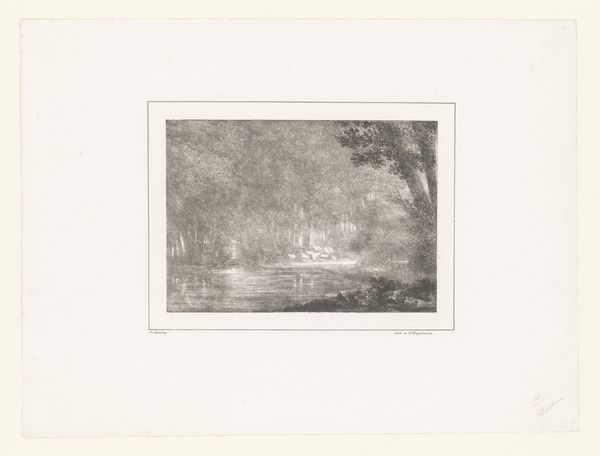
print, etching, paper
#
art-nouveau
# print
#
impressionism
#
etching
#
landscape
#
paper
#
realism
Dimensions: height 90 mm, width 140 mm
Copyright: Rijks Museum: Open Domain
Editor: We're looking at Alfred Elsen's "Heuvellandschap met begroeiing," a landscape etching on paper from between 1860 and 1910, held at the Rijksmuseum. The detail in this small print is really captivating. It feels incredibly intimate. What stands out to you in terms of its visual structure? Curator: The effectiveness of this etching lies precisely in its economy of means. Consider how Elsen manipulates the contrast between light and shadow to define form. The dense network of lines in the foreground gives way to a more open, airy rendering of the distant hills. Notice how the path serves as a leading line, directing the viewer's eye through the composition. Does the handling of the medium reveal anything about Elsen's engagement with artistic styles? Editor: It almost seems like a dialogue between Realism and Impressionism; there’s a groundedness, but also a fleeting quality to the light. The textures definitely add to the sense of realism, though. Curator: Precisely. Note the layering and density of etched lines. Where are they most concentrated? Observe how that concentration affects the perceived depth and mass of the trees. Editor: I see it now! The darker, denser areas define the bulk of the trees and the shaded path, creating volume with just lines. I never thought an etching could achieve such depth. Curator: Elsen masterfully uses the inherent qualities of etching - the precision of the line, the potential for tonal variation – to create a scene that feels both realistic and evocative. A brilliant study in composition and form, wouldn't you agree? Editor: I agree! Thinking about the formal elements, I now see a very carefully constructed scene, much more so than just a quick impression of nature. Thanks for pointing that out!
Comments
No comments
Be the first to comment and join the conversation on the ultimate creative platform.
